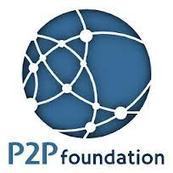 Your new post is loading...
“New technologies offer tremendous emancipatory opportunities if they are designed to be open and free (free software / open source hardware). However, they also entail new problems. Proprietary software prevents quick detection of programming errors and allows the surveillance of users. Devices are short-lived, the raw materials for their production are limited, and the working conditions in their production and recycling are often catastrophic. If new technologies are to meet our high expectations, the following questions must first be answered: Can these devices be fairly produced, traded and recycled? Is it possible to produce and use them autonomously? How can programming errors that represent security risks be avoided? And how can all these aspects be taken into account in the design process?
A review not just of the highlights of the conference but of the promise of the movement and the concept of distributed manufacturing. Very well done video.
The Arts and Crafts Movement of late 19th century England professed to democratize art and the production wares. The most prominent character of the Movement was poet, craftsman and socialist William Morris. I claim that today open source philosophy and peer production combined with 3D printing technology represents a similar philosophy about the democratization of production as the 19th century Arts and Crafts Movement. 3D printing is a nascent technology which allows the physical rendering (prototyping) of computer models. As The Arts and Crafts Movement was opposed to machines, I try to ascertain to what extent the Movement’s opposition toward the machine extends and what it is based on. Therefore, I discuss the machine’s two-sided role as, on the one hand, the destroyer of art, and on the other hand, the saviour of art.
The researchers believe their analysis shows that the pressure on raw materials doesn’t necessarily decline as affluence grows. They argue that humanity is using natural materials at a level never seen before, with far-reaching environmental consequences. They hope the new material footprint model will inform the sustainable management of resources such as water.
In order not to yield to technological messianism, we should however be aware of the obstacles that the diffusion of these technologies is likely to meet, starting with those posed by the various actors who have opposite interests to their development, and those resulting from ecological constraints and the availability of resources.
Ouishare Fest 2014 presentation via Tomas Diez on Evolving From Fab Labs To Fab Cities
This remark by a librarian of Lyon, attributing the birth of socialism to the mechanics of the Jacquard loom, was made with the deepest disapproval. In his history of Lyon, it was his explanation for the violent uprisings by artisan weavers that had shaken the town thirty years earlier. As he saw it, in raising the living standards of workers, the Jacquard loom encouraged higher pay demands and worker recalcitrance. What interests me in the quote above is not the claim that the Jacquard loom improved the living standards of weavers, nor whether their radicalism was driven by growing affluence or deepening deprivation. Both of those claims are questionable, to say the least (cf. Strumingher & Bolo, 1978). Of greater relevance to my argument in this paper is that the quote links the introduction of a new technology with the birth of a political – even a revolutionary – idea, the idea of socialism. Still more intriguingly, the technology in question is the famous Jacquard loom. A series of technical advances over the previous fifty years in the Lyon weaving district had culminated in this machine, nowadays hailed as the world’s first computer. The loom mechanism was guided by punched cards, a machine tool control system still employed in heavy industry a century and a half later (Noble, 1986). It is the same principle of using pre-written instructions – i.e. software code – to control the movements of a tool head, that lies at the heart of 3D printing. As for socialism, Adrian Bowyer launched the open source 3D printer project Rep-rap with a manifesto article, where he stated the following:
“Sourcemap is the open collection of supply chains and environmental footprints. Visit sourcemap.com for more information.”
The world’s oldest continuously working mechanical timepiece, the clock at Wells Cathedral was wound by hand every week for 600 years until the last in a long line of ‘Keepers of the Great Clock’ retired in August 2010. Maintaining the clock demanded skill, dedication and a great deal of care. As the centuries passed, it needed each of the keepers to develop a loving relationship with the mechanism, to tend, nurture and cajole it into a long life. It is this quality of relationship that we lose when we lose our connection with the objects we own, and this sense enchantment with the material world we are part of, that lies at the heart of an emerging ‘New Materialism’ that promises a world of better, not more.
“1. Language, information and the virtual space were distinctive features of the previous generation. Craft, matter and the fusion of the digital and the material are defining generation M, the first generation of the 21st century.
“The shanzhai sharing have become more business-like in form of readily available designs, boards, molding and others. Also, design houses working with Shanzhai vendors all offer open BOM options. “Open parts”are public available cases, panel, boards, battery and etc that are manufactured by multiple companies with open design. Anyone can acquire these on open market and modular from different supplier can work together. The kind of publicly available cases and boards I see in Shenzhen are becoming very sophisticated fast. The drive to do public available parts may be partly due to lack of IP protection (if it’s going to be copied, it may just well be open and shared) and part due to cost saving. But the ecosystem emergent from these practices is almost like the vision laid out by open manufacturing. After all, it’s about sharing and exchange of how to build and collaborate on the manufacturing. While we’re still trying to figure out how open source hardware may work, they get a system in place already. The simple parts are getting complicated fast because new ones are not designed from scratch but build on top of the previous products.
“Few days ago, after the presentation of the joint venture between Phonebloks and Motorola, called Project Ara, that I pretty enthusiastically commented earlier on this blog, we reached out to Phonebloks website with a contact request. Surprisingly enough we got very soon a very kind response from Dave Hakkens, the original creator of the Phonebloks idea and campaign. While navigating hundreds of emails with ideas and inspirations and, in parallel, building the platform that will help Phonebloks keep it’s independent vision going on, Dave found out some time so sit down in front of an hangout and share some time with us, discussing the next steps and the key points behind this incredible project that holds amazing promises.
“It is clear that the ecosystem is just forming, so that the promises of a third industrial revolution are not being realised yet. The clearly identified bottlenecks with regard to usability, object quality, price and co–ordination of collaboration likewise speak of a number of elementary hurdles on the way of the revolution. On the other hand, the wide variety of uses for 3D printing and the rapid growth of the community point to a strong potential. The theorists mentioned in the introduction have also been right in emphasising the role of the open source development model, as adapted to physical production, in facilitating the development of 3D printing/manufacturing. Interestingly, the physical characteristics of 3D printing — end results not in a commons, the level of skill and experience evident in end product — may, in time, produce modes of commons–based peer production different from open source software development.”
|
This proposal consists on a fab city made up of an interconnected community of neighborhood fab labs, as explained here by Tomas Diez, who is interviewed below by Sara Alvarellos:
Since the First Industrial Revolution manufacturing has gone through stages of increasing centralization. But with the emergence of affordable open source 3D printers the pendulum may swing back to decentralized home-based production.
The issue is the following: this free (as in free speech) but also zero dollar approach, centered around common value production, does not have it’s own means of sustainability. And critically, advertising will not be able to fill the enormous gap between the exponential rise in common value production, and the linear monetization of attention through advertising. Also, critically, we do not (as yet, and perhaps never), live in a society which has a clear mechanism for funding common value production.
“This paper reflects a long tradition of utopian thought in engineering, a tradition in which the progressive application of human reason to nature is projected to make the market obsolete. This promise comes in at least two versions. One tendency, epitomised by the ‘red cyberneticists’ in the Soviet Union, primarily objects to the irrationality of the price mechanism, and strives to replace the market with computers as a means of allocating resources (Dyer-Witheford, 2013). The second tendency, to which Rep-rap project arguably belongs, looks forward to the day when wealth is so abundant that scarcity will have been superseded, and markets with it.
“The natural successor to the Industrial and Internet Revolutions, the Industrial Internet will completely transform the way that we live and work. Intelligent machines enable optimization, leading to better performance, lower costs and higher reliability. Check the scenarios to learn more about how the Industrial Internet can be applied in different industries. The Industrial Internet Consortium (IIC) manages the collaborative efforts of industry, academia, and government to accelerate growth of the Industrial Internet. This not-for-profit Consortium provides the forum to catalyze, coordinate, and manage the collaborative program..”
“Recently, a number of articles and videos about 3D printing of houses in China have gone viral, catalyzing a lot of attention for this very promising subject.
“I’ve long been interested in construction automation, both for use in space and for domestic uses. Unable to employ much sweat equity in building myself, I’ve long been interested in the idea of building the machines that might build for me. One concept that I’ve wanted to explore was self-assembling space frame systems based on a scheme devised by designer Scott Howe;
[SC] New fields for open source hardware are growing day by day: many new projects bring Open Source Hardware to new markets (automotive, furniture,etc…). Some important, cross-sector, projects were born in 2013 (see the link): what are the new fields you expect Open Source Hardware to thrive with?
Now that we have some understanding of why 20th century attempts at the industrialization of building were such abject failures we can better appreciate the potential revolution eluded to in this Ancient Lasers article. It is far more than just a revolution in automation. It’s not simply obsolescing building contractors. It’s industrial technology that radically changes the way of building, facilitating something that is more consistent with the original, organic, nature of architecture itself, and which past industrial technology and paradigms were simply inadequate to. Facilitating potentially great economy with a design freedom that was once well expressed in pre-industrial times, despite the limits in technology, but could not be economically sustained under Industrial Age paradigms with their market logic, over-specialization of labor, and ‘over-professionalization’ of the craft of the built habitat.
The literal meaning of shanzhai is “mountain fortress,” but it carries the connotation of a fortified area or stronghold outside the state’s control, or a place of refuge for bandits or rebels (much like the Cossack communities on the fringes of the Russian Empire, or Sherwood Forest). The 108 bandits of Song Jiang, one of the more notable shangzhai legends, also carry a flavor something like “Robin Hood meets Che Guevara,” according to Huang.
“We are a Chilean group called “Red de Evolución Colaborativa” (Collaborative Evolution Network), RedEC. We work in the study, analysis, implementation and promotion of alternative production models.
|
 Your new post is loading...
Your new post is loading...
















